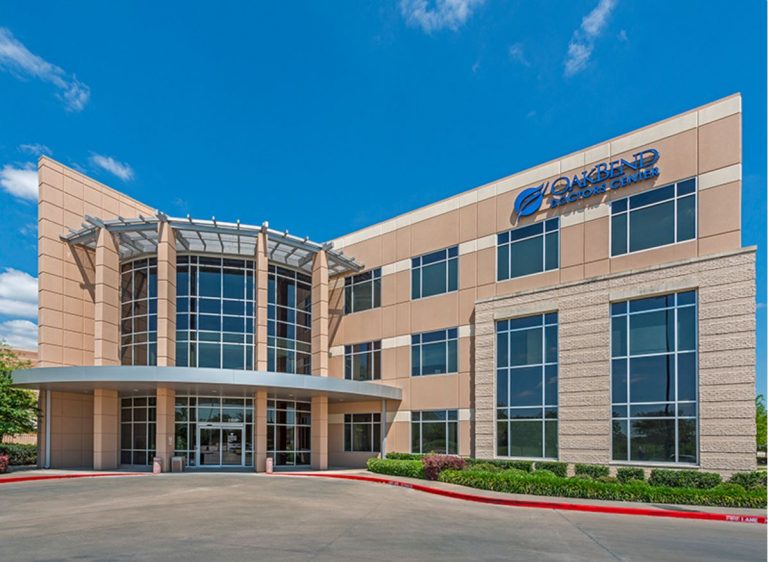HSRE Healthcare Portfolio
THE OFFERING
A 92% Leased, Multi-State Institutional Healthcare Real Estate Portfolio
INVESTMENT HIGHLIGHTS
 The Portfolio presents an excellent opportunity for an investor to acquire a 92% leased, institutional-quality healthcare real estate portfolio anchored by a diverse range of health systems and investment grade credit tenants in ten states.
The Portfolio presents an excellent opportunity for an investor to acquire a 92% leased, institutional-quality healthcare real estate portfolio anchored by a diverse range of health systems and investment grade credit tenants in ten states.
92% Leased to Diverse Tenant Mix
The Portfolio is 92% leased to a diverse group of tenants that include health systems, physician practices, and other healthcare providers. 73% of the Portfolio is leased by health systems or their owned subsidiaries and leading physician group networks, including Self Regional Healthcare (Moody’s ‘A1’), UF Health Jacksonville (Moody’s ‘Baa3’), Dignity Health (Moody’s ‘A3’, Standard & Poor’s ‘A’ Fitch Ratings ‘A’), Aurora Health Care (Fitch ‘A+’), Catholic Health Initiatives (Fitch Ratings ‘A+’, S&P ‘A’, Moody’s ‘A2’) and US Oncology/McKesson (Moody’s Baa2). Virtually all major healthcare specialties are represented in the Portfolio; including cardiology, oncology, gastroenterology, general surgery, internal medicine, behavioral health, neurology, obstetrics & gynecology, physical therapy, orthopedics, ophthalmology, otolaryngology, podiatry, rheumatology, sleep medicine, chiropractic, immunology, urology, dentistry, pediatrics, and family medicine. The majority of remaining tenancy is made up of surgery center space, imaging & diagnostics, pharmacy and lab space.
Attractive On-Campus Locations
Eight (8) of the medical office buildings are located either on or adjacent to hospital campuses, making them mission critical real estate for the health systems. In addition, the properties positioned off-campus are generally well-located in easily accessible areas within close proximity of major medical institutions.
Favorable Net Lease Structure with Annual Rent Increases
The Portfolio provides an investor with a favorable triple net lease structure and annual rent escalations, limiting expense exposure for the Landlord and providing revenue growth. Net-leased healthcare real estate continues to be a preferred real estate investment as it offers a low maintenance investment for the Landlord. Furthermore, the average remaining lease term across the Portfolio is 8.6 years, providing additional long-term stability.
Instant Scale with Geographic Diversity
The Portfolio presents a rare opportunity to acquire approximately 677,150 rentable square feet in ten different states across the U.S. including Texas, Florida, North Carolina, South Carolina, New York, Pennsylvania, Ohio, Wisconsin, Missouri and Kentucky. The Portfolio yields approximately $15.14 million in in-place net operating income and $15.26 million in pro forma net operating income, providing an investor with instant scale and the opportunity to mitigate pursuit costs with a single transaction.
Preferred Ground Lease Term and Structure
Six (6) of the properties within the Portfolio are subject to ground leases. The ground leases have approximately 80.0 years of average remaining term, including options to extend.
Diversified Healthcare Real Estate Asset Types
The Portfolio’s assets are diversified with thirteen medical office buildings (MOBs), four inpatient rehabilitation facilities (IRFs), and one multi-use campus with a surgery center and rehabilitation facility. In addition, the Portfolio includes nine multi-tenant properties with opportunity for additional lease-up, as well as ten single tenant properties with long term leases providing more stability.
Increased Demand for Outpatient Facilities
Healthcare systems are under mounting pressure from government and insurance companies to reduce costs and find alternatives to traditional hospital care. As the cost of outpatient treatment is generally less than inpatient treatment, the demand for outpatient services, and buildings where those services are offered, should continue to increase as the large population of Baby Boomers age and require more medical care.
Positive Physician Employment Trends
As provider reimbursements via Medicare and Medicaid shrink, primary care physicians and specialists will continue to contemplate the idea of selling their practice to the hospital. According to Managed Care Magazine, “the majority, if not 85% to 90%, of all physician groups will be integrated into some type of system. The kind of practice of independent medicine we once knew is dead.” These trends should enhance the overall credit of the Portfolio over the holding period.
Appealing Aging Trends
The favorable payer mix and demographics in the majority of the Portfolio bodes well for the projected stability of the Portfolio going forward. The number of Americans aged 65 and older (with an increased need for health care) is projected to double to 71 million or nearly 20% of the U.S. population by 2030. Within a 5-mile radius of the Properties, residents aged 65 or older currently comprise approximately 11.3% of the total population, a figure that is expected to grow more than 25.9% over the next five years. In addition, approximately 85.8% of the total population within a 5-mile radius of the Properties has access to medical care through private or government insurance programs. Furthermore, outpatient procedures in these service areas are expected to grow by approximately 11.3% over the next five years. (Source: MRA)
“Recession Resistant” Asset Category
Medical office continues to be recognized as the “recession resistant” property category. National Real Estate Investor magazine states that, “The allure of medical office buildings hinges largely on predictable occupancy patterns. Doctors typically sign long-term leases and have renewal rates upwards of 90%.” All of this equates to steady long-term cash flow, rent stability and fewer tenant improvement costs over the life of the Portfolio.
Delivered Free and Clear of Existing Debt
No debt will encumber the Portfolio, offering an investor the opportunity to benefit from current market conditions and attractive debt markets for a “preferred asset class” as referred to by lenders.
Christopher Bodnar
chris.bodnar@cbre.com CBRE
+1 (303) 628-1711
Lee Asher
lee.asher@cbre.com
CBRE
+1 (404) 504-5965
To learn more, please click here.
The full content of this article is only available to paid subscribers. If you are an active subscriber, please log in. To subscribe, please click here: SUBSCRIBE






